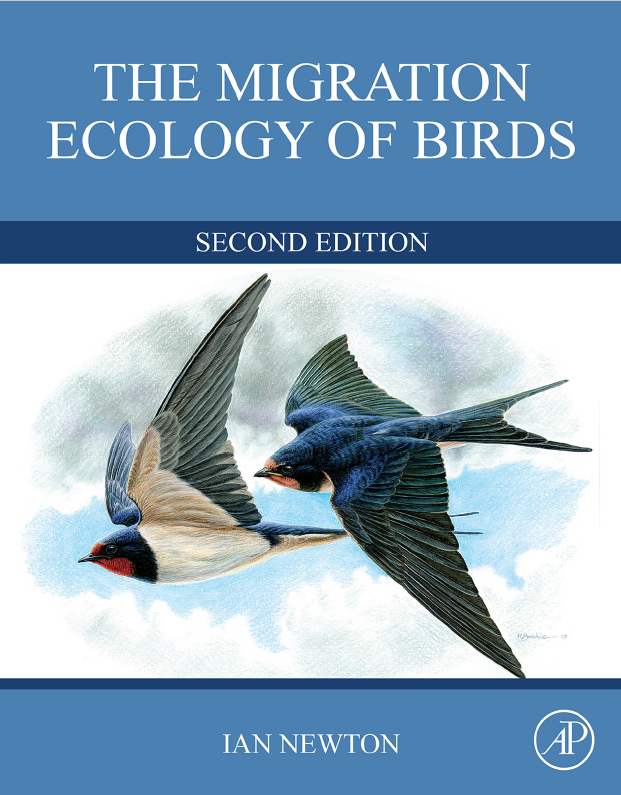
This second edition of a book first published in 2008 is a masterwork (but its price is beyond most individual readers and so it will mostly be read in academic libraries). I have the first edition on my shelves and a .pdf of this second edition in my inbox. This fully revised edition (rewritten with three extra chapters, one chapter being split and one chapter deleted, making a new total of 31 chapters) has 3000 references, one third of which have appeared since the first edition was sent to press.
Bird migration is one of the natural wonders of our world, most obviously at temperate and higher latitudes but also in the tropics. There is nothing like spring, and the arrival of summer visitors in their fairly regular sequence from late March to mid-May, to make one feel alive and part of the rhythms of our planet. Yes, many other taxa migrate but there is something amazing about the fact that the Swifts over your house in May may have been over the rainforests of the Democratic Republic of Congo in December, or that the Fieldfare eating apples on your lawn in a cold snap in February will be nesting in Scandinavia in May. How do they do it? Why do they do it? What is the ecology and evolutionary history of bird migration? The answers, quite complete answers, are inside the pages of this book (or the screens of its ebook).
The book is what we expect from its erudite author – clear summaries of the key scientific findings and a very readable text. Ian follows the advice that is often given to, and often ignored by, students giving talks that they should say what they are going to say, say it and then say what they’ve said. Each chapter has a short introduction and a shortish and very useful summary.
This is a monumental book. It explains a natural phenomenon and it covers a vast literature with aplomb. You and I would be stumped if we wanted to understand, from the original science, the speed and length of migratory journeys or how migration affects the process of population limitation in migratory species or what are the physiological changes necessary for the triggering and successful achievement of migration, but Prof Newton has done all that for us and summarised it all brilliantly.
The cover? A well-known migrant by Keith Brockie. I’d give it 7/10.
The Migration Ecology of Birds (Second edition) by Ian Newton is published by Academic Press.
[registration_form]